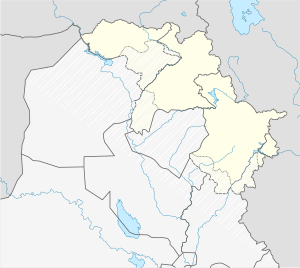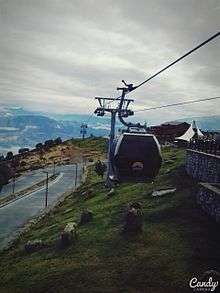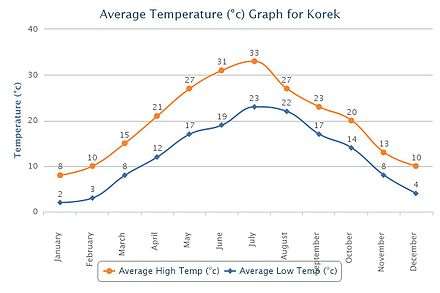Mount Korek
Mount Korek (Kurdish: Çîyayê Korek ,چیای کۆڕەک)[1][2] is a mountain located in Erbil Province of Iraqi Kurdistan, It is 50 kilometers away from the Iranian border.
| Korek | |
|---|---|
 | |
| Highest point | |
| Elevation | 2,127 m (6,978 ft) |
| Coordinates | 36°35′20″N 44°27′32″E |
| Geography | |
 Korek Location in Iraqi Kurdistan | |
| Location | Soran District, Erbil Province |
Observatory
In 1973, President Ahmed Hassan al-Bakr ordered the construction of the Erbil Observatory, an observatory with three telescopes.[3]
In the early 1980s, about 400 people were working on behalf of Baresel, Epple, Krupp, Liebher and Zeiss to build 3 telescopes. In late 1983, they ran tests on the small telescope.[4] Although the building site was close to the war zone, it was safe from the Iranian military. 400 people from about 10 countries worked there. Each time the crew flew home for winter holidays, the building-site needed to take safety precautions due to heavy snowfalls. Eventually, the war made it impossible to finish the building. The partly-built Observatories were destroyed by the Iranian rockets launched during the Iran–Iraq War.
Tourism

Mount Korek is a tourist attraction with Darin Group, an Iraqi company that built an approximately 4 kilometer long Doppelmayr Teleferic (cable car) from its Bekhal Bottom station to Mount Korek. The mountain was developed as an international destination, including 132 villas and several rides. The project is called "The Korek Mountain Resort & Spa". There are also restaurants and cafes. The resort is a summer retreat providing cool environs when the whole region reels under high temperatures. During winters, it turns into a Ski Resort.
The Resort is one of the top 10 destinations to visit in the Kurdistan region of Iraq.
Weather
The mountain region has very volatile and extreme weather.

Temperature ranges from 2 - 33 °C. The lowest temperature is -14 °C.
Rainfall is recorded from 20 – 75 mm
.jpeg)
It has between 60 – 100 days of snowfall in the mountains, between December and March.
Note: The data for charts above are taken from year 2000 to 2012
References
- "بەفر گەشتیاران بەرەو چیای کۆڕەک رادەکێشێت" (in Kurdish). Retrieved 19 December 2019.
- "Li Çiyayê Korek lateke balkêş heye". Rûdaw (in Kurdish). 20 November 2019. Retrieved 19 December 2019.
- Simmons, Mike (2007-01-01). "Seeing Stars in Iraq". Scientific American. Bibcode:2007SciAm.296a..23S. doi:10.1038/scientificamerican0107-23. Retrieved 2015-11-02.
- "Astronomy in Iraq". Adsabs.harvard.edu. 2006-08-22. Bibcode:2006IAUSS...5E..41A. Cite journal requires
|journal=(help)